Showing 31–40 of 358 results
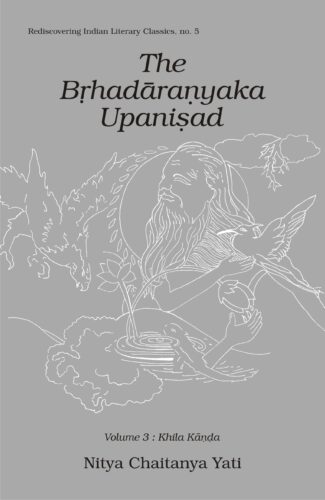
This dialectical narration of the Brhadaranyaka Upanisad will help the reader discover the ancient seers timeless insights to appreciate an integrated system of thought and experience what is real and enduring in his/her own essence.
The Brihadaranyaka Upanishad is one of the ten major Upanishads. A dialectical narration that unabashedly stands up to the rational scrutiny of the modern mind, it is directed towards both the individual aspirant caught up in the dark morass of confusion and the philosophic thinker in search of rare pearls of wisdom from humanitys treasury. Guru Nityas matchles commentary will enable the reader to discover the ancient seers timeles insights, to appreciate a fully-developed, integrated system of thought, and, most importantly, to learn to connect with what is real and enduring in his or her own essence. Schematically, the Brihadaranyaka Upanishad a brilliant discourse from the Yajur Veda is set out in three volumes, entitled: Madhu Kanda, Muni Kanda and Khila Kanda. In his planned three-volume thorough-going, meticulously analytical commentary. Guru Nitya distills the wisdom teaching of the Brihadaranyaka Upanishad, drawing on his intimate understanding of the human psyche, as well as both Eastern and Western philosophy, science, art and literature. Dwelling in turn on each of its 435 mantras, its poetic charm, myths, metaphors, images and symbols, Guru Nitya recreates and expands the Upanishadic vision of our own nature, human interaction, and the cosmos, and their relation to the unmoved essence of all. With highly useful appendices and a comprehensive index, the commentary will hold an enduring appeal for both scholars and discerning readers.

This dialectical narration of the Brhadaranyaka Upanisad will help the reader discover the ancient seers timeless insights to appreciate an integrated system of thought and experience what is real and enduring in his/her own essence.
The Brihadaranyaka Upanishad is one of the ten major Upanishads. A dialectical narration that unabashedly stands up to the rational scrutiny of the modern mind, it is directed towards both the individual aspirant caught up in the dark morass of confusion and the philosophic thinker in search of rare pearls of wisdom from humanitys treasury. Guru Nityas matchles commentary will enable the reader to discover the ancient seers timeles insights, to appreciate a fully-developed, integrated system of thought, and, most importantly, to learn to connect with what is real and enduring in his or her own essence. Schematically, the Brihadaranyaka Upanishad a brilliant discourse from the Yajur Veda is set out in three volumes, entitled: Madhu Kanda, Muni Kanda and Khila Kanda. In his planned three-volume thorough-going, meticulously analytical commentary. Guru Nitya distills the wisdom teaching of the Brihadaranyaka Upanishad, drawing on his intimate understanding of the human psyche, as well as both Eastern and Western philosophy, science, art and literature. Dwelling in turn on each of its 435 mantras, its poetic charm, myths, metaphors, images and symbols, Guru Nitya recreates and expands the Upanishadic vision of our own nature, human interaction, and the cosmos, and their relation to the unmoved essence of all. With highly useful appendices and a comprehensive index, the commentary will hold an enduring appeal for both scholars and discerning readers.

This dialectical narration of the Brhadaranyaka Upanisad will help the reader discover the ancient seers timeless insights to appreciate an integrated system of thought and experience what is real and enduring in his/her own essence.
The Brihadaranyaka Upanishad is one of the ten major Upanishads. A dialectical narration that unabashedly stands up to the rational scrutiny of the modern mind, it is directed towards both the individual aspirant caught up in the dark morass of confusion and the philosophic thinker in search of rare pearls of wisdom from humanitys treasury. Guru Nityas matchles commentary will enable the reader to discover the ancient seers timeles insights, to appreciate a fully-developed, integrated system of thought, and, most importantly, to learn to connect with what is real and enduring in his or her own essence. Schematically, the Brihadaranyaka Upanishad a brilliant discourse from the Yajur Veda is set out in three volumes, entitled: Madhu Kanda, Muni Kanda and Khila Kanda. In his planned three-volume thorough-going, meticulously analytical commentary. Guru Nitya distills the wisdom teaching of the Brihadaranyaka Upanishad, drawing on his intimate understanding of the human psyche, as well as both Eastern and Western philosophy, science, art and literature. Dwelling in turn on each of its 435 mantras, its poetic charm, myths, metaphors, images and symbols, Guru Nitya recreates and expands the Upanishadic vision of our own nature, human interaction, and the cosmos, and their relation to the unmoved essence of all. With highly useful appendices and a comprehensive index, the commentary will hold an enduring appeal for both scholars and discerning readers.

This dialectical narration of the Brhadaranyaka Upanisad will help the reader discover the ancient seers’ timeless insights to appreciate an integrated system of thought and experience what is real and enduring in his/her own essence.
The Brihadaranyaka Upanishad is one of the ten major Upanishads. A dialectical narration that unabashedly stands up to the rational scrutiny of the modern mind, it is directed towards both the individual aspirant caught up in the dark morass of confusion and the philosophic thinker in search of rare pearls of wisdom from humanity’s treasury. Guru Nitya’s matchles commentary will enable the reader to discover the ancient seer’s timeles insights, to appreciate a fully-developed, integrated system of thought, and, most importantly, to learn to connect with what is real and enduring in his or her own essence. Schematically, the Brihadaranyaka Upanishad — a brilliant discourse from the Yajur Veda — is set out in three volumes, entitled: Madhu Kanda, Muni Kanda and Khila Kanda. In his planned three-volume thorough-going, meticulously analytical commentary. Guru Nitya distills the wisdom teaching of the Brihadaranyaka Upanishad, drawing on his intimate understanding of the human psyche, as well as both Eastern and Western philosophy, science, art and literature. Dwelling in turn on each of its 435 mantras, its poetic charm, myths, metaphors, images and symbols, Guru Nitya recreates and expands the Upanishadic vision of our own nature, human interaction, and the cosmos, and their relation to the unmoved essence of all. With highly useful appendices and a comprehensive index, the commentary will hold an enduring appeal for both scholars and discerning readers.
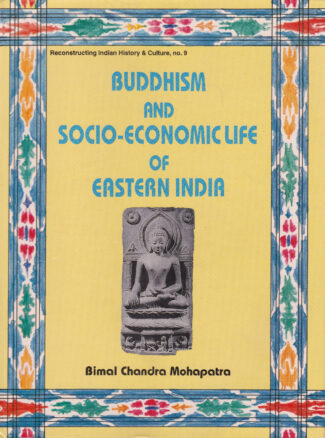
This book is the first-ever effort to gauge Buddhisms impact on socio-economic life under the Palas in Bengal and the Bhaumakaras of Orissa.
With the revival of Brahmanical Hinduism sometime around the fifth century ad, Buddhism had been dying out in India. But, paradoxically perhaps, in Bengal and Orissa, it saw not only its resurgence, but also a spell of its climactic glory for the rulers of these Eastern Indian regions, during eighth-twelfth centuries, were the devout adherents of Buddhist faith. At the secular layers, the Eastern Indian society of the times, as elsewhere in the subcontinent, was going through a period or transition: from the ancient to medieval. This book looks at the status of Buddhism in Bengal, Orissa, and their peripheral regions in Eastern India during 8th-12th centuries ad. Yet, more significantly, it is the first ever effort to gauge the impact of Buddhism on contemporary socio-economic life, ruled by the dynastic families of zealous Buddhists, namely, the Palas in Bengal (ad 750-1199) and the Bhaumakaras of Orissa (ad 756-c.950). Contextually, Dr. Mohapatra evolves indepth, analytical perspectives on pre-medieval religion, society and economy in Eastern India drawing on wide-ranging sources: both primary and secondary. Supported by relevant visual material, extensive bibliographic references, and a glossary of non-English words, the book is invaluable to the students/specialists of Buddhist studies and Indian history.
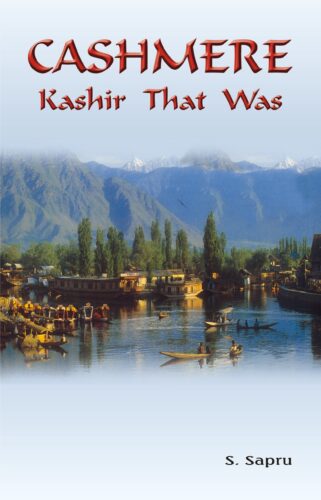
Original inhabitants now living as refugees in their own land this is the plight of Kashmiri Pandits now. This book describes the life, customs and traditions of the half-a-million people of this community, and their march from medieval times into the modern age.
India is a land of communities, and Kashmiri Pandits are one of them. Though they are the original inhabitants of the Kashmir valley, famous the world over for its beauty and learning, they are living in their own country as refugees since 1989 due to religious persecution, ethnic cleansing and terrorism their only fault lay in their religion, Hinduism. This book describes basically the life and times of the half-a-million people of this community living in peace and harmony with nature. It also delves into the march of the people from medieval times into the modern age and the impact of transport and communication technologies that opened a window for information flow into the valley cocooned for so long due to the high mountains all around. Customs and traditions are described in a changing scenario brought about by the introduction of the English language in the late 19th century.
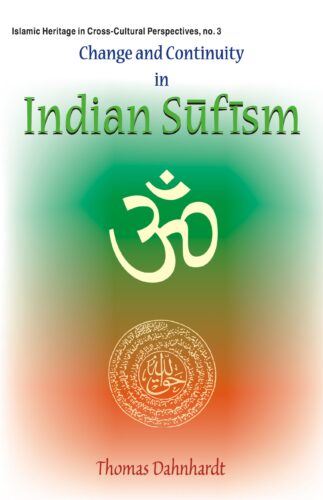
Dr. Thomas Dahnhardt deals with the evolution of the Indian lineage of the Naqshbandiyya also called Mujaddidiyya to study the spiritual symbiosis between the Hindu and Muslim communities. He surveys various masters of the tradition, the establishment of a new khanaqah and the emergence and methodology of the Hindu offshoot of the Mujaddidiyya Mazhariyya.
The common heritage of India is an active concept expressing itself in the myriad forms of integration of diverse cultures and traditions. Change and Continuity in Indian Sufism explores this common heritage through a study of the esoteric relationship between Indias two major religious traditions, Hinduism and Islam as expressed in the sufi tradition. Dr. Thomas Dahnhardt focuses on the evolution of the Indian lineage of the Naqshbandiyya, generally known as the Mujaddidiyya, in Indian sufism as an example of the intense spiritual symbiosis between the Hindu and Muslim communities. Based on a field study among the Hindu and Muslim representatives of the Naqshbandiyya lineage, he presents a social and historical study of the Naqshbandiyya Mujaddidiyya, surveying the various masters of the tradition and taking up specifically the establishment of a new khanaqah of the Mazhariyya branch of the Mujaddidiyyal in Old Delhi, one of the most important Naqshbandi centres of the tradition in the Indian subcontinent. The work goes in detail into the emergence, doctrines and methodology of the Hindu offshoot of the Mujaddidiyya Mazhariyya along with creation of regional sub-Hindu branches. The book would be useful to scholars of inter-religious studies, Sufism and Indian religious traditions as well as general readers interested in the process of integration of traditions and communities.

Dr. Thomas Dahnhardt deals with the evolution of the Indian lineage of the Naqshbandiyya also called Mujaddidiyya to study the spiritual symbiosis between the Hindu and Muslim communities. He surveys various masters of the tradition, the establishment of a new khanaqah and the emergence and methodology of the Hindu offshoot of the Mujaddidiyya Mazhariyya.
The common heritage of India is an active concept expressing itself in the myriad forms of integration of diverse cultures and traditions. Change and Continuity in Indian Sufism explores this common heritage through a study of the esoteric relationship between Indias two major religious traditions, Hinduism and Islam as expressed in the sufi tradition. Dr. Thomas Dahnhardt focuses on the evolution of the Indian lineage of the Naqshbandiyya, generally known as the Mujaddidiyya, in Indian sufism as an example of the intense spiritual symbiosis between the Hindu and Muslim communities. Based on a field study among the Hindu and Muslim representatives of the Naqshbandiyya lineage, he presents a social and historical study of the Naqshbandiyya Mujaddidiyya, surveying the various masters of the tradition and taking up specifically the establishment of a new khanaqah of the Mazhariyya branch of the Mujaddidiyyal in Old Delhi, one of the most important Naqshbandi centres of the tradition in the Indian subcontinent. The work goes in detail into the emergence, doctrines and methodology of the Hindu offshoot of the Mujaddidiyya Mazhariyya along with creation of regional sub-Hindu branches. The book would be useful to scholars of inter-religious studies, Sufism and Indian religious traditions as well as general readers interested in the process of integration of traditions and communities.
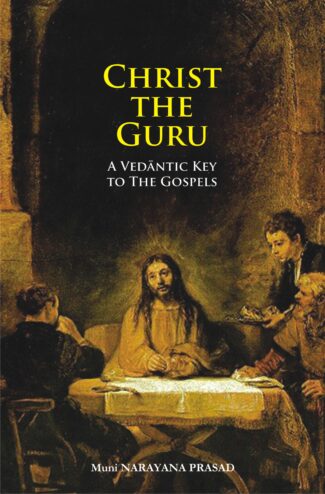
This commentary volume contends that, from the Gospel accounts of Bible, one may perceive, in Jesus’s life and words, the same absolutist vision that underlies the teachings of Advaita Vedanta. Echoeing interreligious harmony, it invites non-Christians to visit the great enlightened guru in Jesus, and the Christians to imbibe the spirit of Advaita Vedanta in Jesus’s teachings.
The ocean of philosophical insight hiding in the words and story of Jesus Christ has influenced and charged millions of people and are still inspiring. The teaching and philosophy discerned across the four Gospels According to Matthew, Mark, Luke and John have stirred the philosophical perspective of Muni Narayana Prasad and it paved the way for him making a Gospel commentary in the light of Indian philosophy, Advaita Vedanta. In his scholarly attempt, the author has brought an apocryphal Gospel of Thomas too into its ambit.
Though the words of wisdom revealed by Jesus across these Gospels differ in language and style from Indian Vedanta, they reveal the same wisdom or supreme happiness that the Vedanta philosophy talks about. In this book, the author has attempted to explain the wisdom found in one cultural frame of reference as found in the other. That is, the teachings of Jesus Christ are elucidated in terms of the characteristics of Advaita Vedanta. Jesus, seen across these Gospels, always maintains his position of an enlightened seer (rishi). Thus the author calls him a sad-guru.
The author contends that from the Gospel accounts one may perceive, in Jesus’s life and words, the same absolutist vision that underlies the teachings of Advaita Vedanta. Echoing interreligious harmony, the author invites the non-Christians to visit the great enlightened guru in Jesus and the Christians to imbibe the spirit of Advaita Vedanta in Jesus’s teachings.
A must-collect, the book should find favour with the spiritual gurus, philosophers, and all progressive-thinking persons across religions.
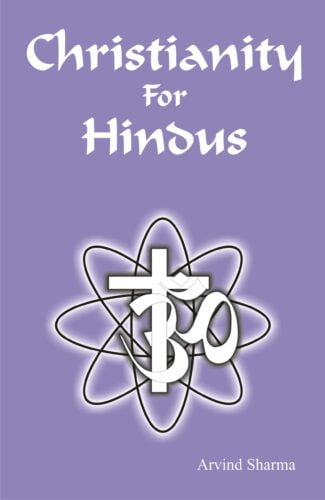
This work, in simple language, is meant for non-Christians, particularly Hindus, who may be interested in knowing about Christianity, professed by about a third of the world’s population what it teaches, how do Christian doctrines compare with Hindu dictums, what are the various denominations, etc.
Christianity is the worlds largest religion today: about 33.6 per cent of the worlds population has Christianity as their religion. It is also a religion that struck roots early in India as early as middle of the first century ce. The book is an account on Christianity that blends aspects of Christian belief and worship with matters like its significance and the urgent need for interfaith understanding in the globalised and pluralistic societies of today. It is meant for non-Christians, particularly Hindus, who are keen to understand the essential aspects of the religion.
In simple language, the work reveals the essence of the Christian beliefs, its spread over history and its prevalence now, and its importance as a world religion. It examines doctrines of the Church, significance of Jesus Christ, and historical forms of Christianity like Roman Catholicism, Eastern Orthodoxy and Protestantism. It examines the history of Christianity in India. The interesting work refers to a number of religious works on Christianity and writings of men who commented on Christianity and personified its values like love, compassion and sacrifice. It also deals with some controversial features of the religion like its need to proselytise.
| There are no products |